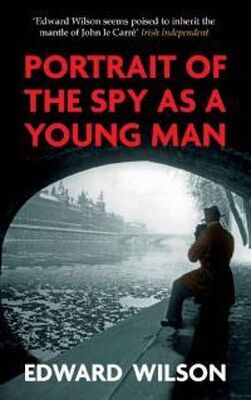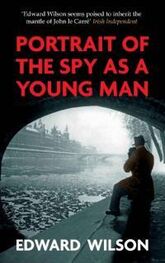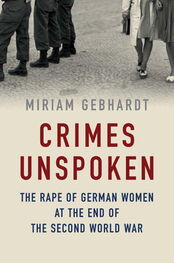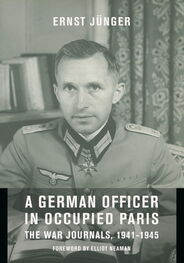The first jump with a parachute was from a balloon. Four trainee jumpers and a dispatcher sat facing each other on a circular bench suspended under the balloon while it rose to a thousand feet above the ground. When it was your turn, the dispatcher shouted ‘Go’ and you went. The first quick plunge, before the parachute opened, you felt like an emptied bucket of water sliding down a drain. Some found it sickening, Catesby found it thrilling. As the canopy billowed, exhilaration was replaced by heavenly peace. Catesby shouted, ‘I’m an angel!’ He wanted the descent to last forever. Sadly, the trees and figures on the ground were growing larger and larger. The landing wasn’t as hard as Catesby thought it would be, but that might have been a trick of the adrenalin rush. It was a calm day, so he wasn’t dragged along by the wind. There was no need to press the quick-release button, an emergency measure to separate jumper from the chute, so he slipped out of the harness and gathered up the canopy. He remembered the jokes of the WRAF girls in the packing shed when they picked up their parachutes, ‘If it doesn’t open, duck, bring it back and we’ll give you a new one.’
The next jumps were from aging Whitley bombers, nicknamed the Flying Coffins. The Whitley made a hell of racket as it built up enough revs to take off and continued to shudder after it was airborne. The noise inside the obsolete bomber was deafening and the dispatcher had to shout and point to make himself understood. These jumps were designed specifically for SOE agents, who were parachuted from much lower heights than infantry and in much smaller numbers. A jump from five hundred feet meant that you hit the ground in less than twenty seconds and there was no time to correct a parachute malfunction. The most feared malfunction was the Roman Candle when, for some strange reason, the canopy silk fails to billow open and streams tightly into itself. There was even a song about it, Beautiful Streamer , sung to the tune of Beautiful Dreamer :
Beautiful streamer, why should you be?
Blue skies above and no canopy.
Billowing white silk is what I should see,
Beautiful streamer, please open for me.
The remaining four qualifying jumps were all at night and all at low altitude. Catesby still had no fear of jumping out of planes. He especially loved the magic transition from the deafening noise of the Whitley and the rough grip of the slipstream which flung you horizontal, to floating like a moth in the silence of the night. Sadly, it only lasted a few seconds before the earth gave you an unexpected rough kiss. The problem with night jumps was judging your height from the ground. You needed to know this to pull the toggle which released the equipment strapped to your legs – ideally at fifteen feet – and to prepare yourself for a PLF. On one jump, Catesby fixed his eyes on a large spreading chestnut tree in the middle of the landing ground. When he got level with the top of the tree, he would release the toggle. A second later, the chestnut tree turned into a lone patch of heather and he was lying next to it.
The final ‘Stately ’ome of England’ in Catesby’s SOE training was a large estate in Hampshire replete with several manor houses. They weren’t supposed to know it was Beaulieu, but everyone did. The estate was usually called ‘The Finishing School’. There were no punishing route marches or commando training. The students were not being prepared for the physical rigours of leading a clandestine life in enemy occupied lands, but for the mental and emotional strains of double lives. A big part of the course was swotting up on the different types of police and intelligence services they would encounter. It was important to recognise different uniforms and different allegiances. Local gendarmes were not always dangerous and sometimes helpful, but the Vichy police reserves and the paramilitary were ultra violent.
In essence, the Finishing School was about security: plausible cover stories, secure communications and dealing with interrogations. Learning how to maintain a cover story under interrogation was the most difficult part of the course. It was about the art of staying calm while walking a tightrope over the chasm of torture and death. There are four questions that even the most plodding cop will ask:
1 Who are you?
2 Where are you from?
3 What identification papers are you carrying?
4 What are you doing here?
The best way to reply is in a voice that is slow, clear and firm. Try to convince that cop that you are the most boring and ordinary person on the planet. Avoid responses that lead to further questions. Each answer should be a dead end. In most cases, the cop will let you go. Taking someone in for questioning will mean extra work. But if he does take you in, the questions from a senior cop will be a lot more difficult:
1 How did you get here?
2 Where are you going?
3 Who is and where is the last person you spoke to?
4Who knows your name and details?
If you don’t get past that round, you may find yourself deeply in the shit. The next stage will be both physical and psychological torture – or they might just kill you. The important thing is to stick to your cover story and deny everything else – no matter what the price you have to pay.
Two entire days were devoted to exercises where students and staff interrogated each other. Things often got rough and bad tempered. There was a lot of self-discovery taking place. Catesby swore that he would never allow himself to be arrested. He would either fight, run or take the L pill. He confided as much to one of the instructors who replied, ‘A lot of people feel that way, but try to do those things when five of them are lying on top of you.’
Some of the exercises were less gloomy. One was: ‘How would you identify yourself as a member of SOE to another member of SOE if you were on the run and didn’t know the current passwords?’ Everyone came up with the same phrase to prove you had done SOE training: ‘… and then you kick him in the balls.’ Another solution would be to identify yourself by translating London underground stations into French codenames. If someone said, Je suis un ange , the other SOE agent would prove their bona fides by answering, J’habite rue Boulanger or Je m’appelle Marie le Bon . There were some playful translations for Cockfosters and Shepherd’s Bush, but the instructors agreed it would be a good idea. No Vichy collabo cop or Gestapo officer would ever guess the secret code.
The final test was an exercise that lasted five days. The trainees were divided into groups of three and given specific tasks: breaking into offices and photographing accounts and employee details; placing mock explosives on railway bridges or electricity substations; stealing cars and police uniforms. Catesby’s group was given the most difficult task: springing an inmate from HMP Parkhurst on the Isle of Wight. The prisoner wasn’t a real criminal, but an Intelligence Corps NCO posing as one. With the exception of the governor, none of the prison staff knew that he was a fake.
One of Catesby’s team pretended to be the wife of the ‘prisoner’ and passed on two sets of details during a visiting day: one fake and one genuine. The fake one was discovered by the guards who were then on alert. The morning of the escape one of Catesby’s team used a crossbow to catapult one end of a rope ladder over the prison wall during an exercise period. It was part of the fake escape plan intended to distract attention from the real one. Whistles immediately started blowing, but the accomplice had already ditched the crossbow and was on the run. Meanwhile, guards and police were sprinting to both sides of the wall. They nabbed one fleet prisoner who had actually managed to get over the top and hauled down two others who were climbing the rope ladder from the inside. Meanwhile, the prisoner to be sprung was hidden in a laundry basket. The normal checks were not carried out on the departing laundry van as so many staff were busy trying to prevent a mass escape. A few minutes later, Catesby, in a policeman’s uniform, flagged down the laundry van, dragged out the hidden prisoner, handcuffed him and bundled him into a waiting car. The van driver was surprised that the car was unmarked, that there was only one cop and that the prisoner had gone without a struggle – but didn’t ask questions.
Читать дальше






